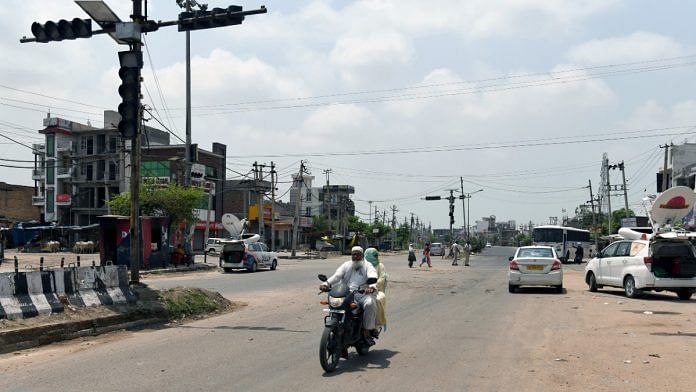New Delhi: Poverty and fertility levels rise, while development indicators witness a downturn when moving away from Gurugram and in the direction of Haryana’s Nuh district, where communal violence claimed six lives earlier this week. Going by NITI Aayog’s Multidimensional Poverty Index 2023, Gurugram (earlier Gurgaon) had an overall deprivation of 3.3 percent in 2021 as against 40 percent in Nuh, barely 50 kilometres away.
The MPI data shows that although the share of Nuh’s population living in multidimensional poverty declined to 39.99 percent in 2021 from 62.5 percent in 2016, the number is still much higher than Haryana’s overall average — 7.07 percent.
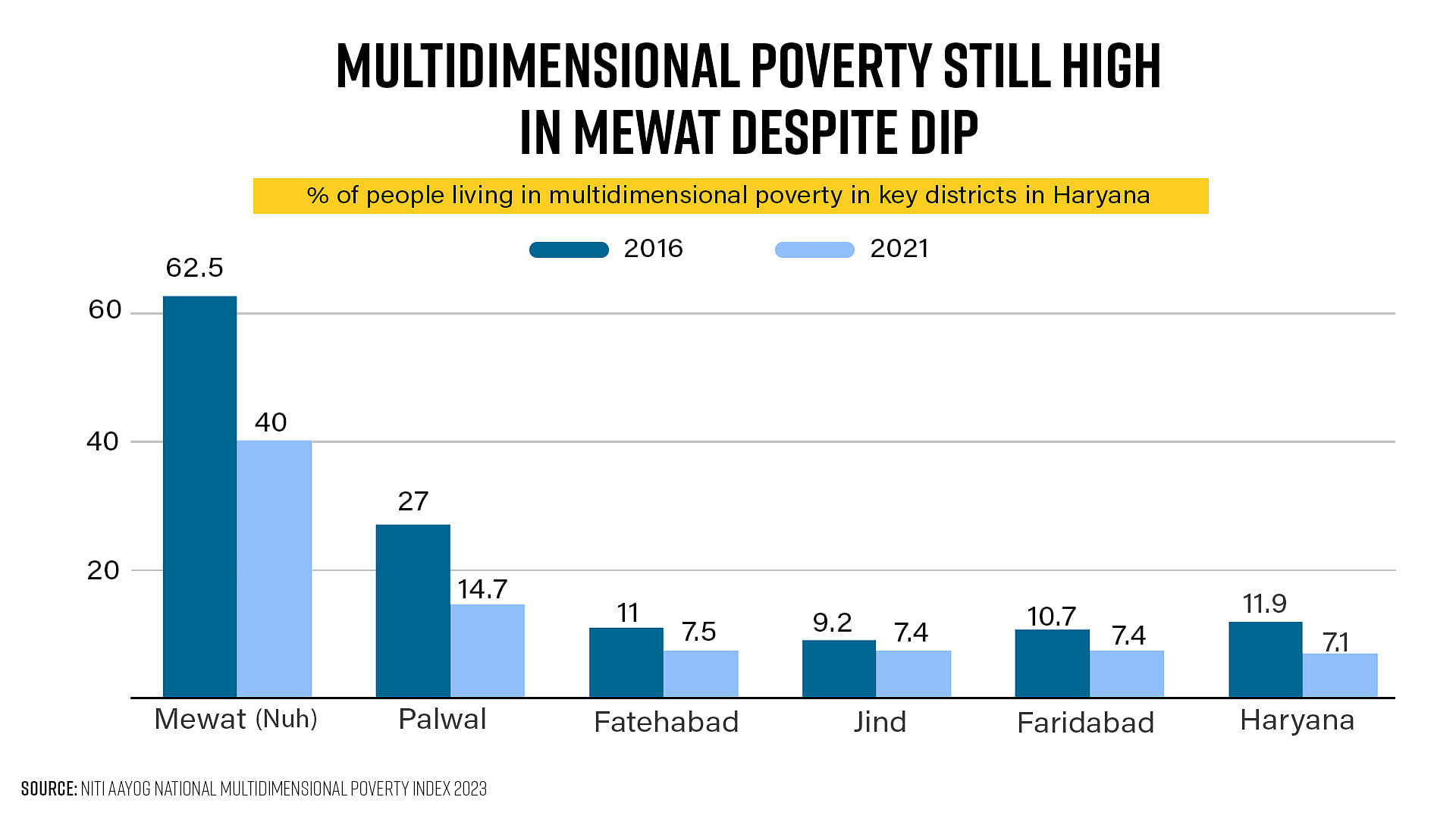
An analysis of district-level data shows that Nuh is home to 8.6 lakh Muslims, who make up 79.2 percent of the district’s population, which is significantly higher than Haryana’s overall average of 7 percent.
What this means is that the 8.6 lakh Muslims in Nuh account for nearly half of Haryana’s Muslim population, according to the 2011 Census.
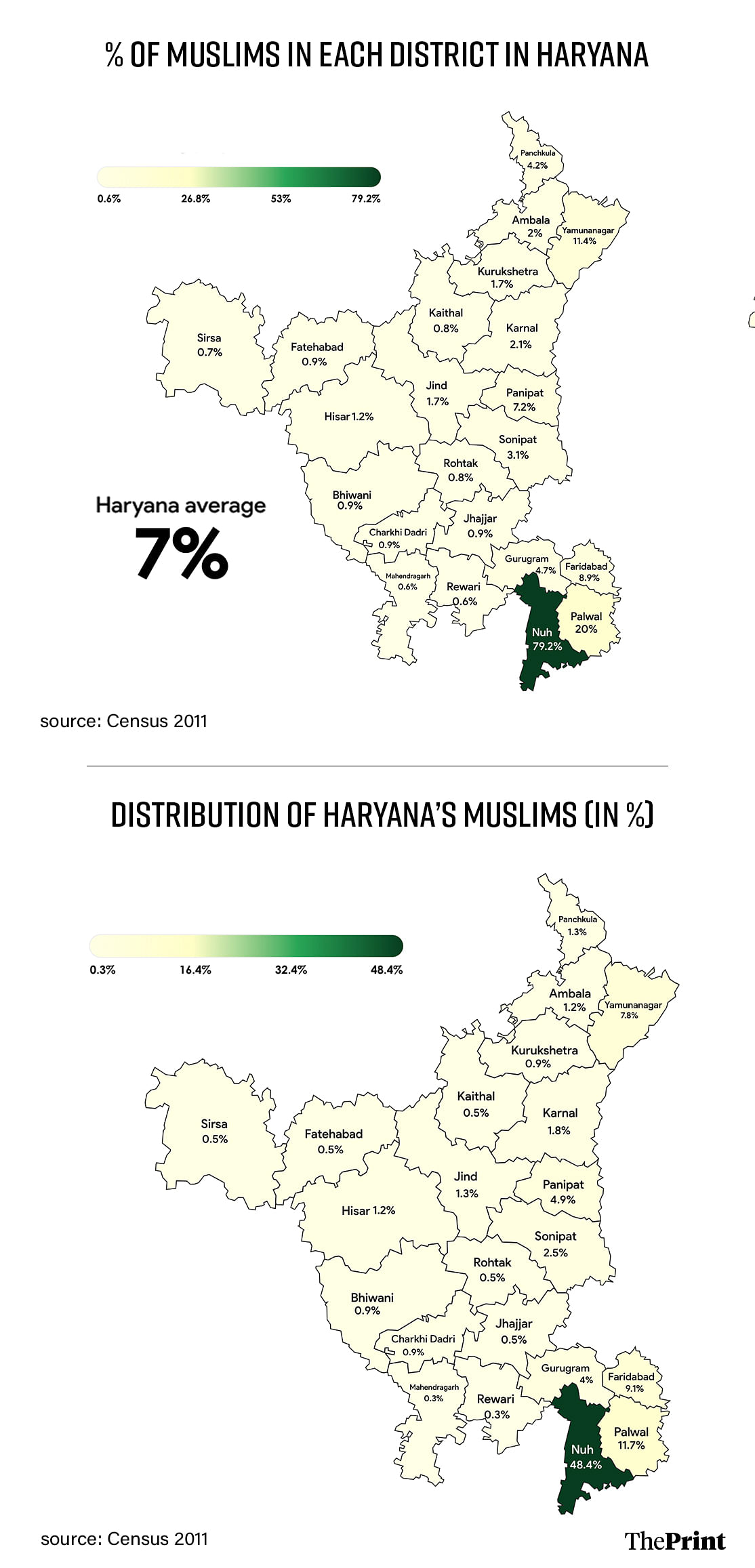
The Census data shows that by 2011, the latest year for which data is available, there were 17.8 lakh Muslims in Haryana, of which 48.4 per cent lived in just one district — Nuh — followed by neighbouring Palwal (11.7 per cent) and Faridabad (9.1 percent), besides Yamunanagar (7.8 percent).
In other words, more than three-fourths of Haryana’s Muslims live in just four of the state’s 22 districts, with a large chunk of them in Nuh.
Also Read: Fear lingers in Nuh after communal clashes — residents tight-lipped, MLA says ‘had warned police’
Worse off than most other Indian Muslims
The deprivation in Nuh, thus, is also reflected in the fact that on average, Muslims in Haryana fare much worse on multiple indicators than Muslims in other parts of India.
To begin with, fertility differentials among Muslims in Haryana are significantly higher than the state’s overall average, the national average, and even the average for Indian Muslims.
The fertility rate — which is basically the average number of children a woman is likely to give birth to in her reproductive life — in Haryana is 1.9, according to the National Family Health Survey 5 (NFHS-5), which covers the period 2019-21. This number is about 2 for India, indicating that the country’s population is nearing replacement levels.
Among Muslims, the national average fertility rate is about 2.4.
In Haryana, this number is as high as 3.87. Although district-level fertility data is not available, it can be assumed that, due to the heavy concentration of Haryana’s Muslim population in Nuh, a woman’s fertility rate in the district is about the same as the average for Muslims in the state.
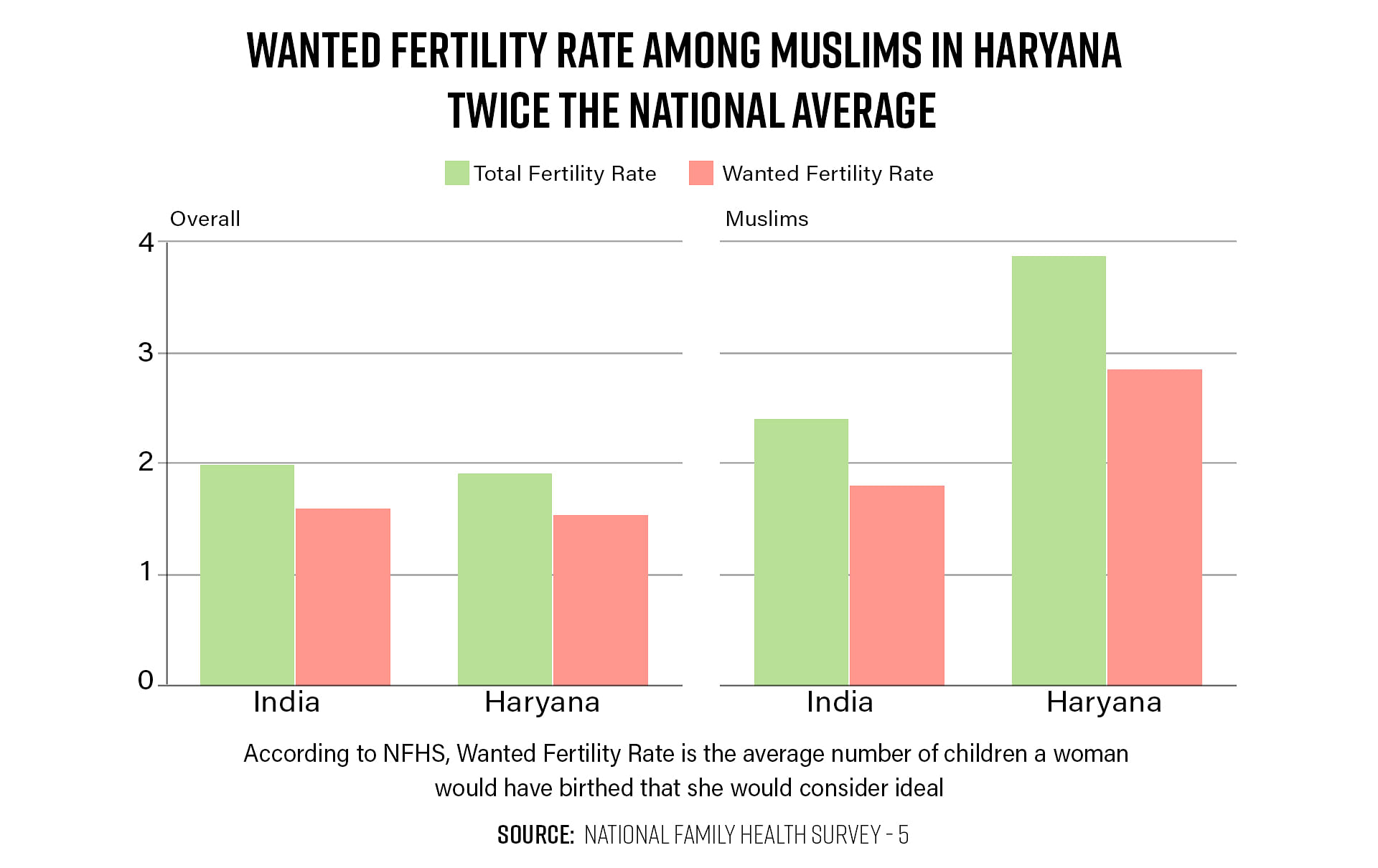
Further, the wanted fertility rate — which measures the number of children a woman considers ideal — is high among Muslims in Haryana.
On average, Indian women desire about 1.6 children (or 16 children among 10 women). The figure is 1.8 for Muslims across India.
And in Haryana, while the wanted fertility rate is 1.5, this number is 2.85 for Muslims — almost double the state’s average.
To add to that, women in Haryana’s Nuh also fare worse in terms of education. The share of women who are literate is just 42 percent, half the average of Haryana (80 percent) and much lower than the national average of 72 percent. In terms of education, barely 14 percent of the women in Nuh district had attained at least 10 years of schooling, as against the state average of 50 percent and the national average of 41.5 percent.
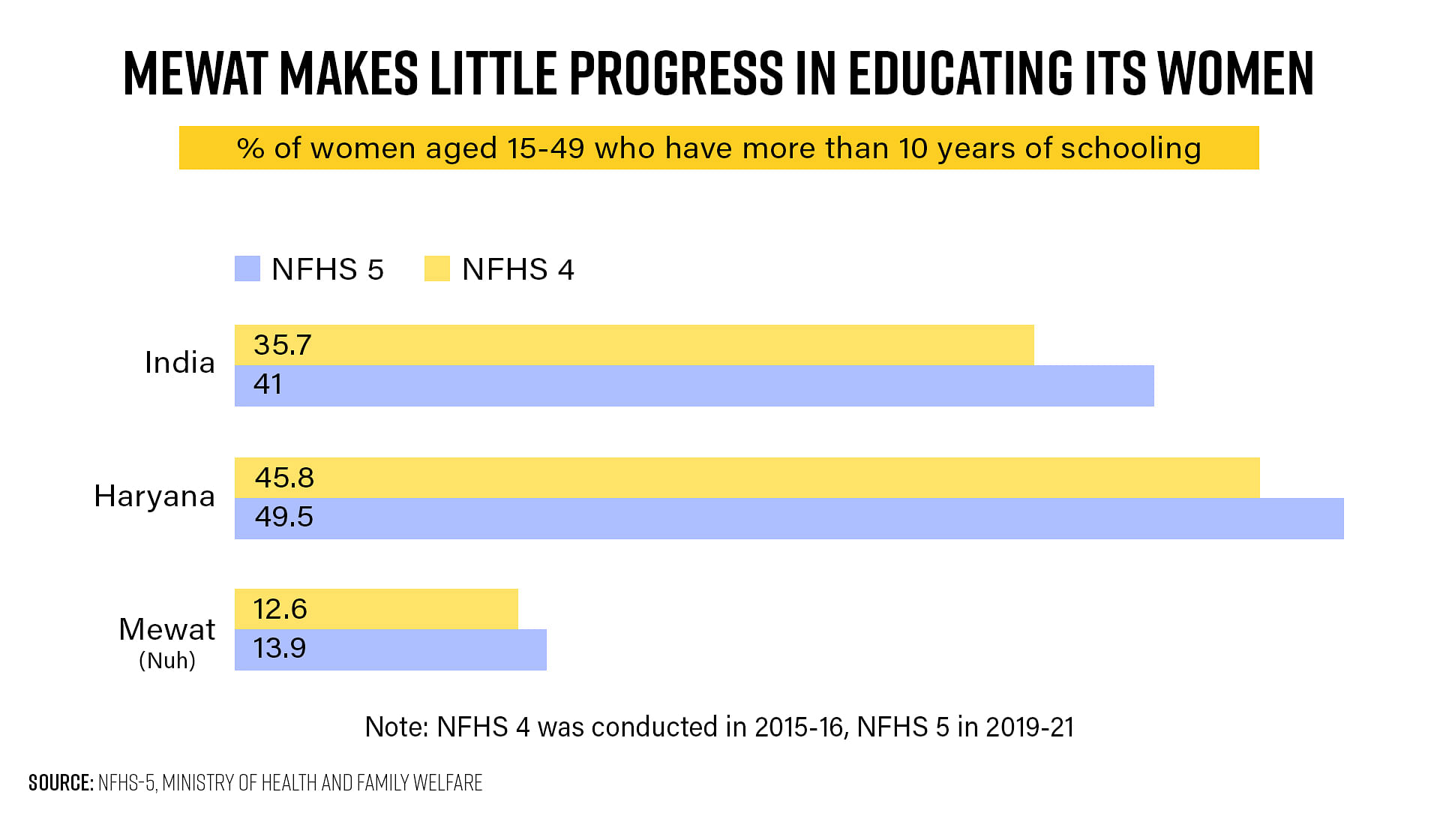
Compared to the findings of the previous round of the NFHS conducted in 2015-16, Nuh has barely improved its education parameters by 1.3 percentage points, to 13.9 percent from 12.6 percent — just a fifth of the improvement seen on average across India.
Besides deprivation and lack of quality development, Mewat has also emerged as a wellspring of online scammers. A detailed investigation by ThePrint last year revealed how scamming, sextortion and online fraud were rampant in the district — earning it the moniker of ‘Haryana’s Jamtara’.
(Edited by Amrtansh Arora)
Also Read: Low poverty & inequality, yet Punjab can’t afford to rest on its laurels. Urban poverty has risen


